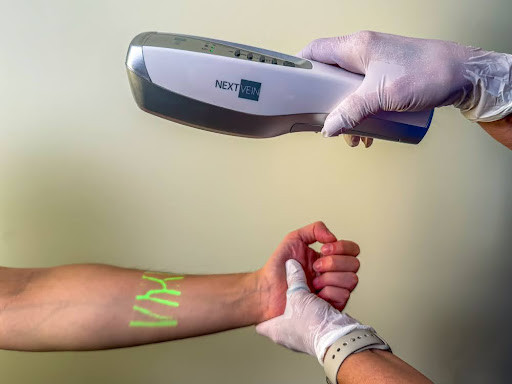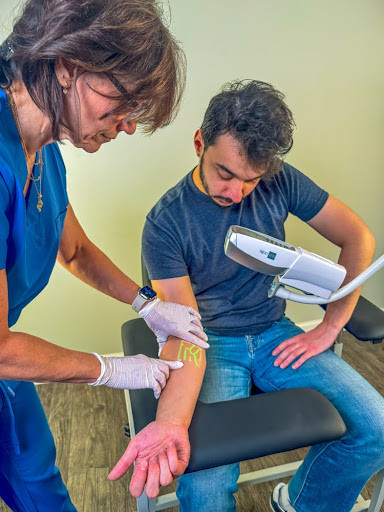Revealing What's Beneath the Surface: Vein Visualization Is Improving Patient Care

For many patients, a hospital visit is a blur of white coats, machines, and procedures they don't fully understand. One moment that can be particularly unnerving is when a provider tries to place an IV or draw blood and misses. It's a rare instance where a patient sees a clinician struggle in real-time.
Patients feel every missed stick and see the discomfort on the provider's face. It can just be a few minutes of stress for some. However, for others, particularly those with hard-to-locate veins, it becomes a source of dread. This moment, small as it may seem in the grand scheme of medical care, can deeply influence a patient's perception of their entire treatment.
"Standard hospital protocols typically allow two attempts before escalation," says Ron Goldman, Co-Chief Executive Officer of NextVein. "If those attempts fail, care slows, patient anxiety increases, and the clinical environment becomes charged with frustration."
Goldman knows this because he has spent decades in the healthcare technology space, building solutions at the intersection of imaging and healthcare. His journey began in engineering and patent law but led him into high-impact executive roles, including founding a pioneer in vein visualization. After more than a decade there, Goldman co-founded NextVein in 2021. "We wanted to rethink how accessible, scalable, and affordable vein visualization technology could be delivered," he says.
Vein visualization, according to Goldman, is compelling because it can solve a problem that many clinicians don't realize they've normalized. Vein valves, which vary in position from patient to patient, can block catheter advancement. Without knowing their location, even experienced practitioners can repeatedly fail. "But with the right visualization tools, they can do three things: actually see the vein, identify the most viable vein, and locate the valves," Goldman states.
Studies recommend incorporating vein visualization technology as a routine strategy, as it significantly reduces the number of failed attempts, shortens the time required to access veins, and lowers patient-reported pain. The emotional ripple effects are also profound. Goldman recounts moments where patients hug medical professionals because they were spared the trauma of multiple needle sticks. "I've worked in tech for decades," he says. "This is the first time I've seen technology that consistently earns hugs."
Yet, despite its proven impact, Goldman has observed that vein visualization technology has faced a slow road to widespread adoption. Part of the problem is how it's introduced. Goldman notes that many hospitals test just one device in one department. That creates inequities.
"A patient might get stuck several times by a clinician, only to be successfully treated with the device pulled from across the building. They're not happy about it because a better tool existed and wasn't used on them from the start," Goldman shares.
Worse, these one-off implementations reinforce the idea that vein visualization is a luxury rather than a necessity. Goldman believes that's changing. Industry guidelines are recognizing vein visualization as a recommended practice, not just for tough cases, but as part of standard vascular access protocols. This is where NextVein comes in.

The company aims to democratize vein visualization. By offering a lightweight, handheld device with advanced features like multicolor projection and adaptable hands-free operation, NextVein makes high-end visualization tools viable across a range of care settings. Its devices are designed for affordability, significantly lower than legacy competitors.
The result is better access, and that's the heart of Goldman's mission. "I didn't want to spend this stage of my career applying my imaging skills to defense or aerospace," he says. "I wanted to build something that helps people, every day, in real ways."
NextVein's approach reflects a larger shift in healthcare: the movement toward practical innovation that improves both clinical outcomes and patient experiences. Hospitals, clinics, and outpatient centers are under pressure to do more with less, and technologies like vein visualization are becoming pivotal to how they meet that challenge.
© Copyright IBTimes 2025. All rights reserved.



















